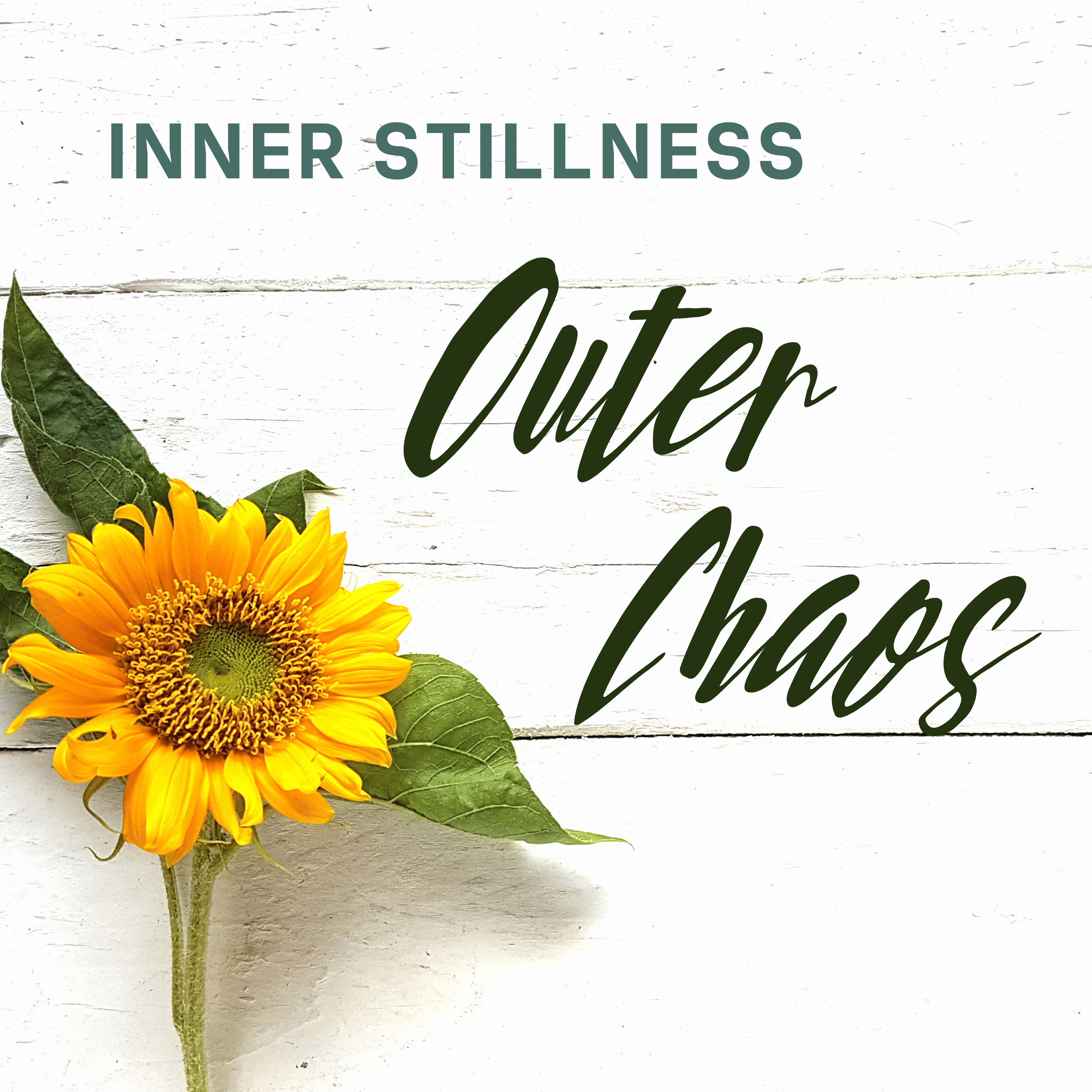

The Link Between Attachment Styles and Burnout
Inner Stillness Outer Chaos
| Avery Thatcher | Rating 0 (0) (0) |
| becomingavery.com | Launched: Jun 18, 2024 |
| podcast@becomingavery.com | Season: 2 Episode: 22 |
We all have unique ways of connecting with others, and establishing boundaries (or a lack of boundaries) in relationships. These patterns or attachment styles, which are rooted in our early experiences, play a crucial role in shaping who we are and how we achieve work-life balance… or not and eventually end up burnt out.
Now, you might be wondering, what do attachment styles have to do with burnout?
The answer?
More than you realize.
SUBSCRIBE
Episode Chapters
We all have unique ways of connecting with others, and establishing boundaries (or a lack of boundaries) in relationships. These patterns or attachment styles, which are rooted in our early experiences, play a crucial role in shaping who we are and how we achieve work-life balance… or not and eventually end up burnt out.
Now, you might be wondering, what do attachment styles have to do with burnout?
The answer?
More than you realize.
We all have unique ways of connecting with others, and establishing boundaries (or a lack of boundaries) in relationships. These patterns or attachment styles, which are rooted in our early experiences, play a crucial role in shaping who we are and how we achieve work-life balance… or not and eventually end up burnt out.
Now, you might be wondering, what do attachment styles have to do with burnout?
The answer?
More than you realize.
Attachment Styles: The Blueprint of Connection
First things first, let's define the different attachment styles. Rooted in early childhood experiences, these styles serve as the blueprint for how we connect with others, navigate relationships, and manage emotions. There are four primary attachment styles: Secure, Anxious-Preoccupied, Dismissive-Avoidant, and Fearful-Avoidant. But with more complex trauma research being done, there’s a fifth attachment style that’s surfaced called the Disorganized attachment style. Let’s break them all down and define them:
1. Secure Attachment: Imagine this as the gold standard. Individuals with a secure attachment style feel comfortable with both intimacy and independence. They trust their partners, communicate openly, and maintain a healthy balance in relationships. Think of it as having a secure base to explore the world from.
2. Anxious-Preoccupied Attachment: Now, this attachment style is like having a radar for potential relationship threats. Folks with an anxious-preoccupied style seek closeness and reassurance but may worry about their partner's commitment. There's a constant need for validation and a fear of rejection.
3. Dismissive-Avoidant Attachment: On the flip side, we have those with a dismissive-avoidant attachment style. Independence is key here. People with this style value self-sufficiency, might downplay the importance of relationships, and find it challenging to open up emotionally. It's a bit like keeping relationships at arm's length.
4. Fearful-Avoidant Attachment: This one's a bit of a mix between anxious and avoidant. Individuals with a fearful-avoidant style desire closeness but fear rejection. They might struggle with trust issues, feeling torn between wanting connection and fearing vulnerability. It's a delicate dance between seeking and avoiding intimacy.
5. Disorganized Attachment: This style combines elements of both anxious-preoccupied and dismissive-avoidant styles, resulting in a unique and often challenging dynamic. Individuals with a disorganized attachment style may have experienced inconsistent caregiving during their early years. Picture a mix of moments where caregivers are a source of comfort and safety, but also instances where they might be a source of fear or confusion. People with a disorganized attachment style may find themselves caught in a tug of war between the desire for closeness and the fear of vulnerability - which is a recipe for severely out of balance people pleasing.
I used to have a disorganized attachment style (and my partner would agree 1000%) - but now I have an anxious attachment style. I share this because it’s important to know that our attachment style can change over time (and as we heal past wounds). Curious what your attachment style is? Check this out.
Now, that’s all fine and great to have these attachment styles defined, but what do they have to do with burnout?
The Hidden Link: Attachment Styles and Burnout Patterns
It turns out that our attachment styles significantly influence how we perceive stress, handle pressure, and navigate the murky waters of professional and personal challenges.
1. Secure Attachment and Burnout:
When we're securely attached, it's like having an extra layer of armor against stress. We're better at reaching out for help when we need it, whether it's from friends, family, or coworkers. People with this attachment style tend to set healthy boundaries, speak up clearly, and tackle problems with a sense of self-assurance. It's like we had a foundation of solid ground built in our early years, helping us stand strong when life gets tough.
2. Anxious-Preoccupied Attachment and Burnout:
On the flip side, individuals with an anxious-preoccupied attachment style may find themselves more susceptible to burnout. The constant craving for reassurance and fear of rejection can create a heightened sensitivity to stressors. This persistent need for external validation and a tendency to magnify negative events can contribute to emotional exhaustion and, eventually, burnout.
3. Dismissive-Avoidant Attachment and Burnout:
When you're dismissive-avoidant, you might value doing things solo and being self-reliant. It can seem like you've got it all under control. But sometimes, downplaying the importance of connections can leave you feeling isolated, which can really wear you down. If you're not so keen on asking for help or opening up, it could mean going through tough times all on your own, which isn't easy.
4. Fearful-Avoidant Attachment and Burnout:
When you're in the fearful-avoidant zone, it's like you're caught in a tug-of-war between wanting closeness and fearing rejection. This inner battle can really amp up your stress levels, which isn't great for avoiding burnout. Trying to find that balance between being independent and letting others in can leave you feeling emotionally drained as you try to figure out how to connect without giving too much away.
5. Disorganized Attachment and Burnout:
When we're dealing with a disorganized attachment style, it can really play a role in our burnout risk. The ups and downs, mixed feelings, and uncertainty that come with this pattern can make it tough to navigate relationships, both personal and professional. For folks like us with a disorganized style, setting clear boundaries can be a challenge. We might go back and forth between wanting closeness and fearing being vulnerable. This inner struggle, along with difficulty trusting others, can crank up our stress levels. And when our relationships lack a steady, secure foundation, it can leave us feeling alone and unsure of where to turn for support when things get tough.
No matter our attachment style, tackling burnout means untangling these complex patterns, understanding how our past experiences affect our present, and slowly building a stronger, more stable base for healthier connections. It's all part of a journey towards unlocking our full potential
Breaking the Chains: Navigating Burnout with Attachment Awareness
Now that we've unraveled the invisible threads connecting attachment styles to burnout, let's explore what to do with this awareness.
- 1. Self-Reflection and Awareness:
- Take the time for deep self-reflection. Explore your own attachment style and how it may have influenced your approach to relationships and stress management. Understanding your unique blueprint is the first step in breaking free from patterns that contribute to burnout.
- Consider seeking professional support, such as therapy or counseling, to understand your attachment style (and its origins) more deeply. A qualified professional can provide valuable insights and guide you on a journey of self-discovery, helping you navigate the complexities of attachment and burnout.
- 2. Building Secure Foundations:
- If your self-reflection reveals a less secure attachment style, don’t worry. Awareness is the first step toward change. Work on building secure foundations in your relationships – both personal and professional. Cultivate open communication, establish healthy boundaries, and seek support when needed.
- Invest in activities that promote true self-compassion and self-care. Building a secure base within yourself can act as a powerful antidote to burnout. Embrace the idea that seeking help is a sign of strength, not weakness.
- 3. Learn How to Be Objective:
- For those with anxious or avoidant attachment styles, objectivity becomes a valuable ally. Objective practices can help regulate stress responses, increase emotional intelligence, and foster healthier connections.
- Engage in activities that promote present-moment awareness, such as meditation, yoga, or deep-breathing exercises. Objectivity can serve as a bridge between your attachment style and a more balanced approach to life's challenges.
So you see, understanding how your attachment style influences your burnout patterns empowers you to make intentional choices, break free from destructive cycles, and widen your window of tolerance.
Ready to take the first step to discover your attachment style and how it is impacting your risk of burnout? Take our free quiz here.
